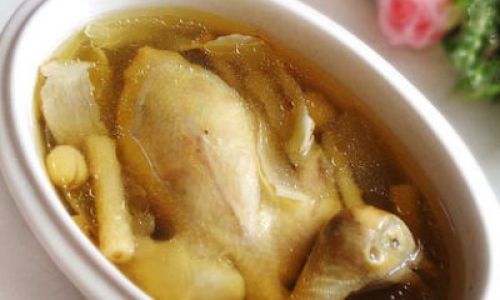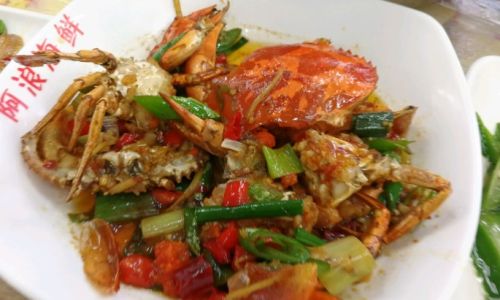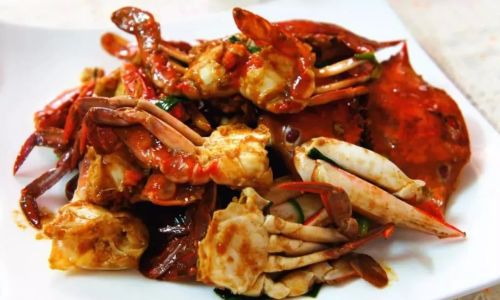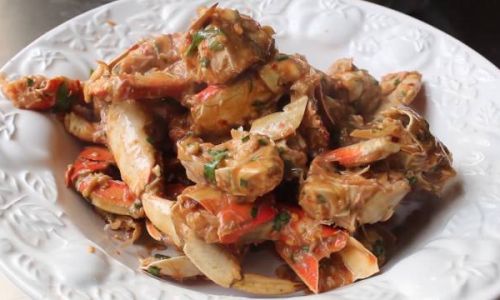Introduction
Stewed Pigeon with Adenophora and Polygonatum Odoratum is a traditional Chinese dish that combines the delicate flavor of pigeon with the nourishing properties of Adenophora root (also known as Shashen) and Polygonatum Odoratum rhizome (also known as Yuzhu). This dish is not only delicious but also believed to have various health benefits, including nourishing the lungs, moistening the dryness, and improving overall vitality. In this article, we will guide you through the step-by-step process of making this exquisite dish, ensuring that you can enjoy its full flavor and nutritional value at home.
Understanding the Ingredients

Before diving into the recipe, let’s take a closer look at the key ingredients involved in this dish:
-
Pigeon: Pigeons are small birds that are often used in Chinese cuisine for their tender meat and nourishing properties. They are believed to be beneficial for improving energy levels and enhancing immune function.
-
Adenophora Root (Shashen): Adenophora root is a type of herbal medicine that has been used in traditional Chinese medicine for centuries. It is known for its ability to nourish the lungs, clear heat, and promote the production of body fluids. This ingredient adds a subtle sweetness and a hint of earthiness to the dish.
-
Polygonatum Odoratum Rhizome (Yuzhu): Polygonatum Odoratum rhizome is another herbal medicine that is valued for its nourishing and moistening properties. It is often used to treat dryness-related conditions, such as dry cough and dry skin. Its flavor is mild and slightly sweet, making it a perfect complement to the pigeon.
-
Other Ingredients: In addition to the main ingredients, you will also need some seasoning and aromatic herbs to enhance the flavor of the dish. These include ginger, salt, cooking wine, and spring onions.
Preparing the Ingredients
Before starting the cooking process, it is important to prepare all the ingredients properly:
-
Cleaning the Pigeon: Begin by rinsing the pigeon thoroughly under running water. Remove any feathers or dirt that may be present. Pat the pigeon dry with paper towels to ensure that it cooks evenly.
-
Preparing the Herbs: Rinse the Adenophora root and Polygonatum Odoratum rhizome under cold water to remove any dirt or impurities. Soak them in water for about 30 minutes to soften them. After soaking, drain the water and slice the herbs into thin pieces for better flavor extraction.
-
Preparing the Aromatics: Peel and slice the ginger into thin pieces. Chop the spring onions into small segments for garnishing.
Cooking the Dish
Now that all the ingredients are prepared, let’s move on to the cooking process:
-
Blanching the Pigeon: Bring a pot of water to a boil. Add a few slices of ginger and a splash of cooking wine to the water to help remove any impurities and enhance the flavor. Carefully lower the pigeon into the boiling water and blanch it for about 3-4 minutes. Remove the pigeon with a slotted spoon and rinse it under cold water to stop the cooking process. This step helps to tighten the skin of the pigeon and remove any excess fat or blood.
-
Preparing the Stewing Pot: Place the blanched pigeon, sliced Adenophora root, and Polygonatum Odoratum rhizome into a stewing pot or a large, heavy-bottomed pot. Add enough water to cover the ingredients by about 2 inches. The water level should be high enough to allow for evaporation during the stewing process but not too high to dilute the flavor.
-
Adding Aromatics and Seasoning: Add a few slices of ginger to the pot for added flavor. You can also add a pinch of salt at this stage, but be cautious with the amount as you can adjust it later. The cooking wine used earlier helps to add a layer of complexity to the dish, but if you prefer a cleaner flavor, you can omit it at this stage.
-
Stewing the Ingredients: Bring the water to a gentle boil over medium-high heat. Once boiling, reduce the heat to low and let the ingredients simmer gently. The key to making a successful stew is patience and low, slow cooking. This allows the flavors to meld together and the meat to become tender and flavorful.

-
First Stage of Stewing: Let the ingredients simmer for about 1 hour. During this time, skim off any foam or impurities that rise to the surface with a ladle. This helps to keep the broth clear and flavorful.
-
Second Stage of Stewing: After the first hour, check the water level. If it has reduced significantly, you can add a little more boiling water to maintain the original level. Continue to simmer the ingredients for another 1-1.5 hours, or until the pigeon meat is tender and the broth is fragrant and slightly thickened.
-
-
Tasting and Adjusting Seasoning: Once the stewing process is complete, taste the broth and adjust the seasoning as needed. You may need to add a bit more salt to bring out the flavors. Remember that the flavors will continue to develop as the dish cools, so err on the side of caution when adding seasoning.
-
Serving the Dish: Remove the stewing pot from the heat and let it cool slightly. Carefully transfer the pigeon and herbs to a serving dish, using a slotted spoon to drain off any excess broth. Pour the fragrant broth over the top and garnish with chopped spring onions for added color and flavor.
Serving Suggestions
Stewed Pigeon with Adenophora and Polygonatum Odoratum is a versatile dish that can be served in various ways:
-
As a Main Course: Serve the dish as a main course with a side of steamed rice or noodles to soak up the delicious broth. The tender pigeon meat and nourishing herbs make it a perfect choice for a hearty and satisfying meal.
-
As a Soup: If you prefer a lighter option, you can serve the dish as a soup. Ladle the broth and ingredients into bowls and enjoy it as a comforting and nutritious start to your meal.
-
For Special Occasions: This dish is also suitable for special occasions, such as family gatherings or festive meals. Its elegant presentation and nourishing properties make it a perfect choice for celebrating with loved ones.
Storage and Reheating
If you have leftovers, you can store the dish in an airtight container in the refrigerator for up to 3 days. To reheat, place the container in a pot of simmering water and heat gently until warmed through. Alternatively, you can reheat the dish in the microwave, but be careful not to overheat it as this may cause the broth to separate.
Conclusion
In conclusion, Stewed Pigeon with Adenophora and Polygonatum Odoratum is a delicious and nourishing dish that combines the best of traditional Chinese cuisine. By following the steps outlined in this article, you can easily make this dish at home and enjoy its full flavor and health benefits. Whether you serve it as a main course, a soup, or a special occasion dish, it is sure to impress your guests and satisfy your taste buds. So, why wait? Gather your ingredients and start cooking today!
This article provides a comprehensive guide to making Stewed Pigeon with Adenophora and Polygonatum Odoratum, covering everything from understanding the ingredients to preparing, cooking, and serving the dish. By following the detailed steps and tips provided, you can create a delicious and nourishing meal that is perfect for any occasion. Enjoy your cooking!






0 comments